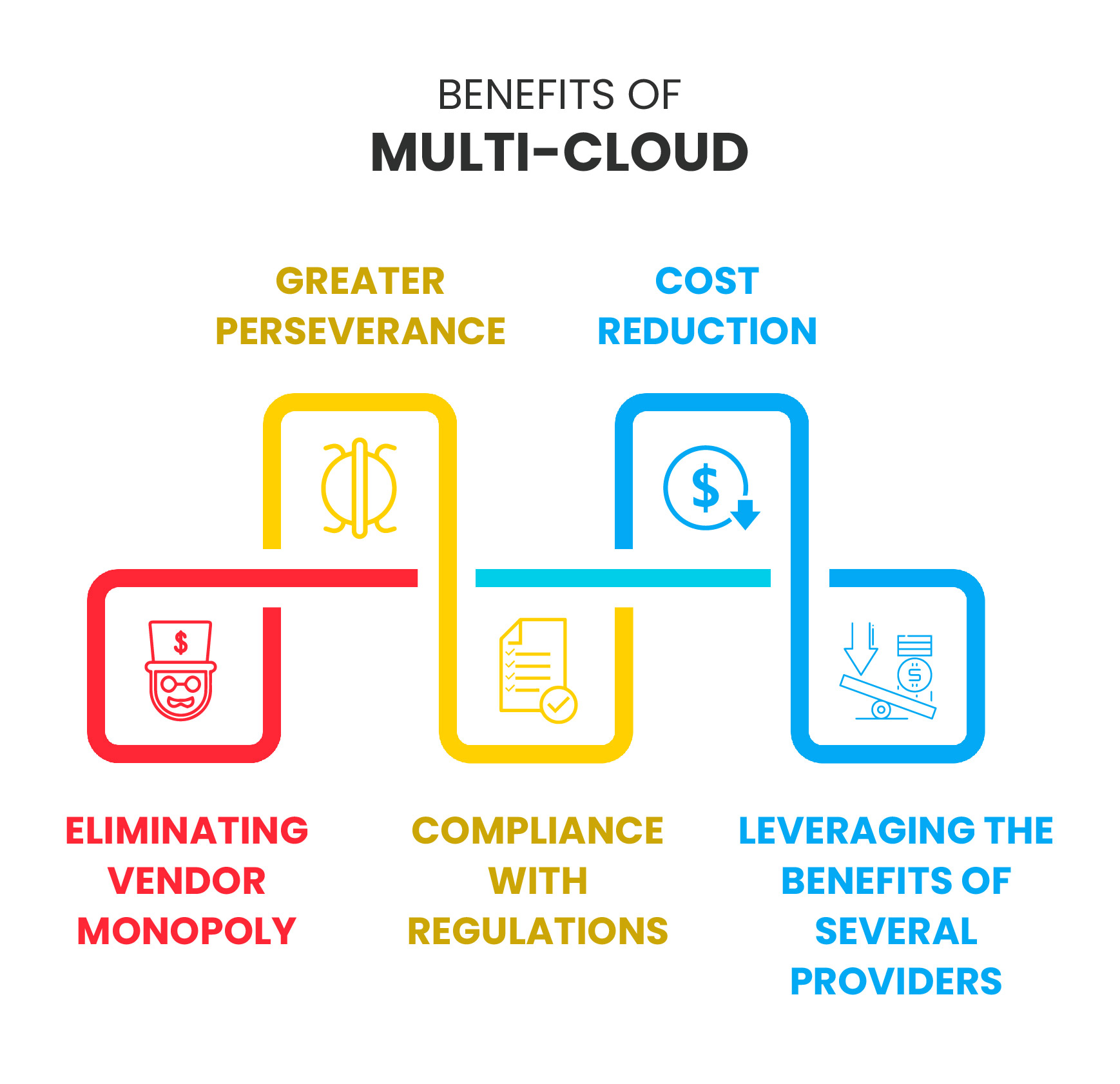What is Multi-Cloud Network Architecture?
According to a 2019 Gartner prediction, more than 75% of big and medium companies would be using hybrid or multiple cloud strategies by 2021. That projection substantially underestimated the rate of rapid cloud adoption. According to the most recent Flexera State of the Cloud report, 93% of businesses already utilize several cloud service providers.

Table of Contents
What is multi-cloud network architecture?
Benefits of multi-cloud
Multi-cloud vs. Hybrid cloud
Need for multi-cloud network architecture
On average, businesses already deploy 2.6 public and 2.7 private clouds as part of the organizational cloud architecture. The digital transformation of enterprises will continue as corporations transition outdated applications, which frequently require reworking, into new settings.
Investigating multi-cloud network design may be a good idea whether you want to maximize stability or optimize workload performance. Today, multi-cloud architecture is commonplace, and it makes sense, given that this sort of architecture provides higher reliability, flexibility, and performance.
So here in this article, let’s discuss multi-cloud network architecture.
What is multi-cloud network architecture?
Multi-cloud network architecture is a cloud architecture in which businesses use a combination of services from different cloud providers. Organizations with a multi-cloud architecture may employ services from two or more cloud platforms, such as AWS, Google Cloud Platform (GCP), or Oracle Cloud, rather than just one.
At a higher level, the multi-cloud network architecture outlines four different layers. These are Cloud Core, Cloud Security, Cloud Access, and Cloud Operations.

Cloud core
The multi-cloud network architecture’s cloud core goes beyond mere connectivity and scales and accommodates the rapid development of organizations and applications. Additionally, it provides a common control plane by utilizing native cloud building blocks, APIs, and advanced capabilities to create a single data plane with the visibility and control necessary to optimize a multi-cloud network.
Cloud security
This completes all of the cloud’s layers and enhances the security of all cloud sections, such as the applications, transit, and access layer. The multi-cloud network architecture concept imposes cloud security in various ways, including connecting the cloud to on-premises, entrance, egress, and security within the cloud through encryption and security segmentation.
Cloud access
When connecting to on-premises resources, the multi-cloud access layer is a critical component of the multi-cloud network. This layer ensures that every part of the organization can safely access the cloud.
Cloud operations
This layer encompasses each layer and offers complete visibility for every part of the cloud. This plane has consolidated operations. The essential cloud features, including automation, visibility, and troubleshooting, are included in this layer.
Benefits of multi-cloud
Adopting the multi-cloud technique has significant advantages. Here are a few examples:

- More extraordinary perseverance: If one of the cloud service providers experiences an interruption, customers can immediately move to a different provider to maintain minimal downtime for the website or application.
- Eliminating vendor monopoly: The key advantage here is agility and flexibility; enterprises do not have to worry about violating a contract if they transfer vendors after a short period.
- Leveraging the benefits of several providers: For example, businesses may choose Oracle Cloud for database services while choosing Amazon EC2 for computational services.
- Cost reduction: Cloud suppliers must offer more fair rates with more cloud service options.
- Compliance with regulations: Depending on the requirements of the enterprise, businesses need to be required by law to keep their data in a particular place. Most cloud vendors can accommodate these needs, but when one vendor provides a benefit over the other, some firms decide for multi-cloud.
Multi-cloud vs. Hybrid cloud
Cloud infrastructure is one where an enterprise uses a combination of on-premises hosting, private clouds, and public clouds. A multi-cloud architecture is unnecessary for a hybrid cloud strategy and vice versa.
A hybrid cloud platform combines two or more different cloud models, whereas a multi-cloud platform combines multiple cloud providers of the same type. You may compare hybrid cloud to combining apples and oranges and multi-cloud to combining different sorts of fruits.
Need for multi-cloud network architecture
A multi-cloud network architecture could indicate that the organization’s IT team runs applications in cloud firewalls without specific communication or configuration amongst cloud providers on the organization’s behalf. Developing a multi-cloud networking reference design is essential in guaranteeing uniform and scalable cloud architectures as the multi-cloud approach grows in importance and usage.
A multi-cloud networking reference design can help you achieve the consistency, security, and scalability you need to expand your multi-cloud approach.
Moving to multi-cloud has a significant advantage in terms of innovation. You may deploy applications and data with the best match by building your structure to use several cloud characteristics. This allows you to run workloads on the best cloud rather than trying to squeeze everything into a substandard environment when your primary provider isn’t the most excellent fit for specific applications.
Cloud with InfosecTrain
The organization’s individual needs and goals should ultimately guide the choice to move to other clouds. Before making this choice, take your time and ensure you have a lot of input from the relevant parties. InfosecTrain is here to support you if you’re prepared to change. Check out InfosecTrain for your learning if you want to learn more about Cloud Computing.






 1800-843-7890 (India)
1800-843-7890 (India)